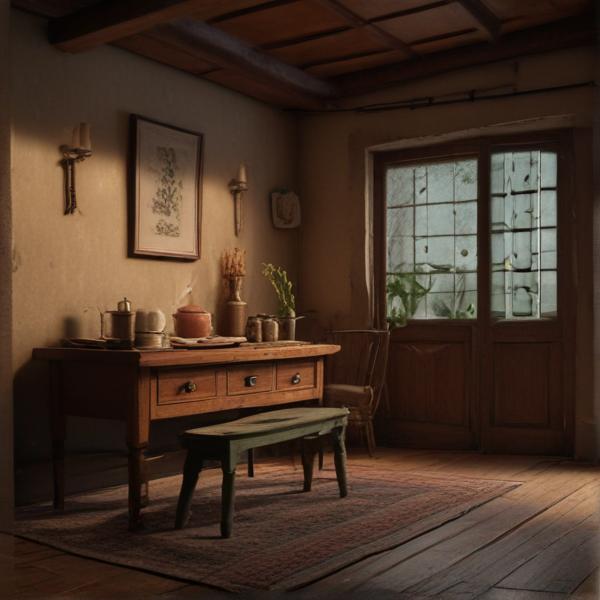基本信息 (Basic Information)
含义与用法 (Meanings & Usage)
中文核心释义 (Core Chinese Meaning): 器皿,容器;工具、用具;才能、气度。
英文核心释义 (Core English Meaning): Utensil, vessel, container; tool, implement; ability, capacity.
象形意义 / 为何这么写 (Pictographic Meaning / Writing Rationale)
文言文释义 (Classical Chinese Meaning)
文言文中“器”主要指器皿、工具,也可指才能、气度,与现代意义相近。In Classical Chinese, '器' mainly referred to vessels, tools, or talent/capacity. Similar to modern meaning.
深入学习 (In-depth Study)
字源故事 (Origin Story)
字形演变 (Character Evolution)
常用词语和例句 (Common Words & Examples)
器皿 (utensils; vessels)
厨房里摆放着各种器皿。
Eng: Various utensils are placed in the kitchen.
乐器 (musical instrument)
小明喜欢演奏乐器,尤其是钢琴。
Eng: Xiaoming likes playing musical instruments, especially the piano.
容器 (container; receptacle)
请把剩饭放进密封容器里。
Eng: Please put the leftovers into a sealed container.
相关成语 (Related Idioms)
大器晚成
Meaning: A great talent matures late; great success takes time.
多语言翻译 (核心释义) (Translations (Core Meaning))
- French: ustensile, récipient, instrument
- German: Gefäß, Gerät, Instrument
- Spanish: utensilio, recipiente, instrumento
- Italian: utensile, recipiente, strumento
- Portuguese: utensílio, recipiente, instrumento
- Russian: сосуд, инструмент, прибор
- Arabic: أداة، وعاء، إناء
- Persian: ظرف، ابزار، وسیله
- Dutch: vat, gebruiksvoorwerp, instrument
- Polish: naczynie, przyrząd, instrument
- Vietnamese: dụng cụ, bình, vật chứa
- Ukrainian: посудина, прилад, інструмент
视频学习资源 (Video Learning Resources)
通过以下链接在热门视频网站搜索 "器" 的更多讲解:
Search for more explanations of "器" on popular video sites:
- 在 Bilibili.com 搜索 "器 字源 说文解字" (Search on Bilibili)
- 在 YouTube.com 搜索 "器 character origin etymology" (Search on YouTube)
网络参考 (Web References for "器") ()
网络内容摘要 (Web Content Summary):
```html“器”的核心含义是“用具”或“器皿”,即指各种盛放、盛装、承载物品的器物。 “器” primarily means "utensil," "vessel," or "container," referring to objects that hold or carry things.
在字形起源上,“器”的甲骨文和金文常表现为多个口(象征容器或器具的开口)叠加在一起,突出其“盛放”或“收纳”的特征。 In its earliest forms (Oracle bone and Bronze inscriptions), "器" is depicted as several "口" (mouth shapes) stacked together, emphasizing its meaning of containing or storing.
- 常见词汇: 器具(tools, implements)、乐器(musical instrument)、容器(container)、仪器(instrument)。 Common words: 器具 (tools), 乐器 (musical instruments), 容器 (container), 仪器 (apparatus/instrument).
- 成语/熟语: “大器晚成”(great talents mature late)、“器宇轩昂”(impressive appearance)。 Idioms: 大器晚成 ("Great minds mature slowly"), 器宇轩昂 ("Imposing bearing").
- 易混淆: “器”有时与“气”(qì, energy/air)在发音或书写上被初学者混淆,应注意区分。 Common confusion: Beginners may confuse "器" (qì – utensil) with "气" (qì – air/energy) due to similar pronunciation or appearance.
“器”字在中国文化中,经常引申为“才能”或“度量”,例如“器量”,表示一个人的气度或胸怀。 In Chinese culture, "器" is often extended to mean "talent" or "capacity," as in "器量" (breadth of mind).
```汉字"器"的起源、演变过程-汉字字源辞典
汉字字源辞典收录7747条汉字词条,基本涵盖了常见汉字的字源解析,是汉字研究的必备工具。
【器】的甲骨文金文篆文字形演变含义 - 甲骨文研究网 甲骨文密码字典 在线甲骨文字典研究 - 甲骨文研究网 甲骨文密码字典 在线甲骨文字典研究 认路
【器】的甲骨文金文篆文字形演变含义 日期:2023-03-19 来源: 甲骨密码 评论: 0 点击: 摘要
更多图片 (器 More Images) ()
